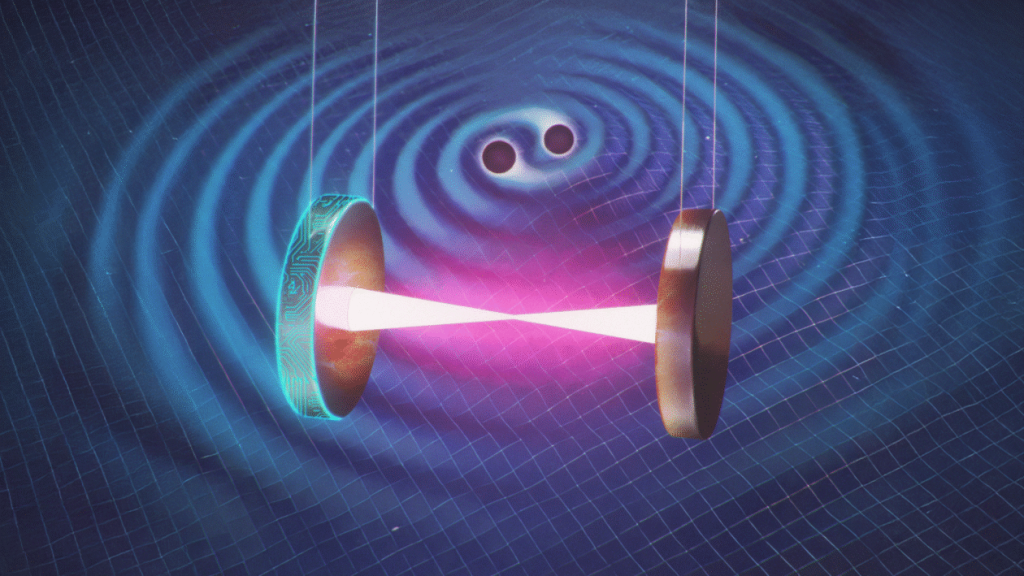How AI is Revolutionizing Our View of the Cosmos
In the vast expanse of southeastern Washington state, two 2.5-mile-long concrete arms stretch across the desert in an L-shape. Inside these tunnels, lasers bounce between exquisitely polished mirrors, forming one half of the most sensitive scientific instrument humans have ever built. This is the Laser Interferometer Gravitational-Wave Observatory (LIGO), and it’s about to become even more powerful thanks to artificial intelligence.
Google DeepMind and the LIGO scientific collaboration have developed an AI tool called Deep Loop Shaping that promises to dramatically enhance our ability to detect gravitational waves—ripples in the fabric of spacetime first predicted by Albert Einstein a century ago. These cosmic disturbances, only directly observed for the first time in 2015 (an achievement that earned the 2017 Nobel Prize in Physics), are created when black holes collide or neutron stars merge billions of light-years away. The challenge in detecting these waves lies in their almost inconceivable subtlety. LIGO must measure distortions smaller than one-ten-thousandth the width of a proton—a feat that physicist Rana Adhikari at Caltech compares to “trying to hold a mirror still with your bare hands.” For decades, scientists have struggled with a fundamental problem: the more precisely they try to control LIGO’s 88-pound mirrors to detect these tiny ripples, the more they inadvertently introduce their own noise into the system, just as your hands might shake when trying to hold something perfectly still.
This is where Deep Loop Shaping enters the picture. Using a process called reinforcement learning, Google’s engineers trained their AI on simulated gravitational-wave readings. “Basically, they were running dozens of simulated LIGOs in parallel,” explains Adhikari. “You can think of the training as playing a game. You get points for reducing the noise, and dinged for increasing it. The successful ‘players’ keep going to try to win the game of LIGO.” The results, published in the journal Science, are remarkable—the AI can quiet the motion of the mirrors 30 to 100 times better than traditional noise-reduction methods alone. This improvement wasn’t achieved through massive computational power but through a more elegant approach to a long-standing engineering problem. The proof-of-concept test, based on an hour’s worth of data from LIGO’s Louisiana detector, demonstrates how AI can enhance human-designed systems beyond what conventional methods have achieved.
The implications of this technological breakthrough extend far beyond simply making existing detections clearer. According to Jan Harms, a professor at Italy’s Gran Sasso Science Institute and co-author of the study, Deep Loop Shaping “opens a new frequency band for gravitational-wave observations, toward the low-frequency end.” This expansion is comparable to developing a telescope that can suddenly see in infrared or X-rays in addition to visible light. With improved sensitivity at lower frequencies, LIGO could detect entirely new classes of cosmic events, particularly involving intermediate-mass black holes and neutron star collisions. Perhaps most excitingly, the enhanced system could provide advance warnings of imminent cosmic collisions. “What you can do is a pre-merger alert,” Harms explains, “so you can let people know that a minute from now, two neutron stars will merge. And then, if you have just enough detectors online, you can even point to a specific patch in the sky and tell them, ‘Look there and wait for it.'” This capability would revolutionize multi-messenger astronomy, allowing traditional telescopes to capture the light, radio waves, and other signals that might accompany these cataclysmic events.
As with any AI system, questions arise about reliability and the potential for “hallucinations” or false data. The LIGO team acknowledges these concerns but notes they already have rigorous monitoring systems in place for their classical methods. “This is a new area for us, so I think we’ll be learning as we go along, and we’ll be developing methods to veto any sort of misbehavior, not just from this system, but even our classical systems that do misbehave sometimes,” Adhikari said. The next phase will involve longer test runs lasting days or weeks at LIGO’s locations in Louisiana, Washington state, and eventually at the planned LIGO-India facility. These extended tests will help ensure the system remains stable and accurate over longer operational periods before being fully integrated into LIGO’s regular observations.
The potential applications of Deep Loop Shaping extend well beyond gravitational wave astronomy. The researchers believe this technology could become part of the standard engineering toolkit for any application requiring precise control of physical components. Jonas Buchli, a research scientist at Google DeepMind and lead author of the study, mentions potential uses in aerospace, navigation, manufacturing, and civil engineering. The noise-reduction techniques might even find their way into consumer products like noise-canceling headphones. “I think once we send this out, hopefully some more people come to think, ‘Oh, actually, gee, I have this really hard control problem. I think I will try that,'” Buchli said. This represents another example of how research at the furthest frontiers of science often yields practical applications that improve everyday life.
The collaboration between Google DeepMind and LIGO highlights how artificial intelligence is transforming scientific research, not by replacing human scientists but by enhancing their capabilities. What makes this partnership particularly notable is that it addresses a fundamental engineering challenge that has persisted for decades—not through brute computational force, but through a more elegant approach to the problem. As LIGO continues its search for gravitational waves with this new AI assistant, we stand at the threshold of a new era in astronomy—one where we can listen more clearly to the universe’s most violent events and perhaps even anticipate them before they occur. The ripples in spacetime that Einstein predicted a century ago are now being captured by an ingenious combination of massive laser interferometers and cutting-edge artificial intelligence, opening new windows into the cosmos and reminding us that our greatest scientific achievements often come from the marriage of bold theoretical insights and practical technological innovation.


